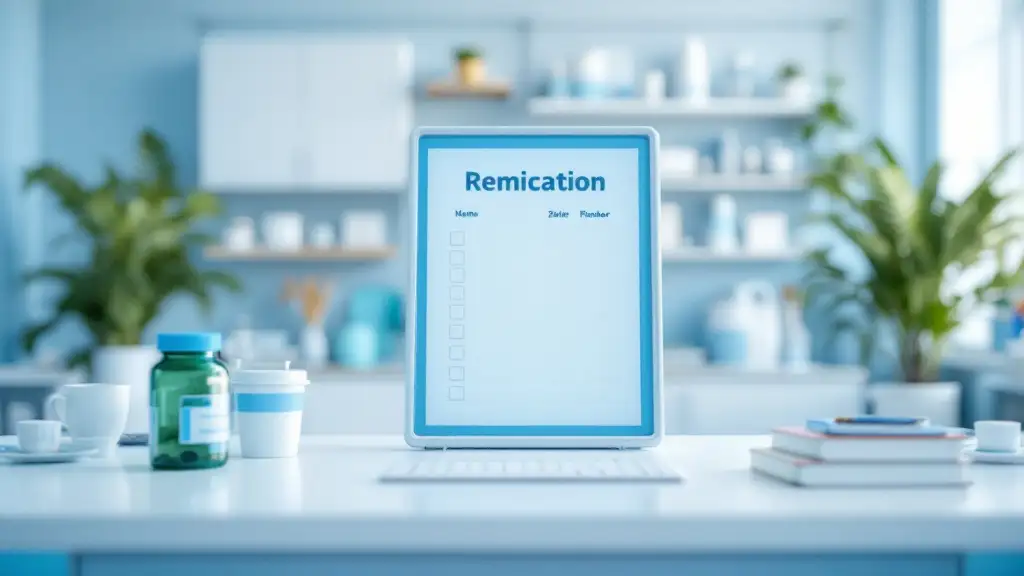Understanding the Dynamic Nature of Treatment Planning
A comprehensive understanding of what a therapy treatment plan looks like over time reveals its role as a crucial roadmap guiding mental health interventions. From initial assessment to ongoing adjustments, treatment plans are living documents that evolve in tandem with a client’s progress, needs, and circumstances. This article explores how these plans are developed, how they develop through different therapy phases, and the factors that influence their duration and adjustments.
Initial Development of the Treatment Plan

What is the process for creating an effective therapy treatment plan?
Developing a solid treatment plan begins with a comprehensive assessment of the client's current mental health status. This initial step involves gathering detailed biopsychosocial information, including medical history, presenting concerns, and personal strengths, which helps in identifying the core issues and resources of the client.
Following assessment, the clinician and client collaborate to set clear and attainable goals. These goals should be specific, measurable, achievable, relevant, and time-bound—often abbreviated as SMART. Client input is vital in this process to ensure that the treatment aligns with their personal priorities and lifestyle.
The treatment plan must also outline individualized intervention strategies, using evidence-based modalities suited to the client's needs, cultural background, and preferences. These can include techniques such as Cognitive Behavioral Therapy (CBT), mindfulness practices, or exposure therapy.
A detailed timeline for implementing interventions and reviewing progress should be incorporated. Typically, treatment plans are created within the first few sessions and serve as a guiding framework for therapy.
Documentation is a crucial component; the plan should be comprehensive, accessible, and regularly updated, often every three to six months. Updates are essential to reflect changes in the client’s progress or circumstances, ensuring the plan stays relevant.
Throughout the therapy process, continuous collaboration, ongoing monitoring, and flexibility to modify goals or interventions are necessary. These practices help in addressing emerging challenges effectively and in promoting positive outcomes.
By following this structured approach, clinicians can create effective, personalized treatment plans that facilitate meaningful progress and adaptation to the client's evolving needs.
Core Components of a Treatment Plan
What are some example components of treatment plans in therapy?
A well-structured treatment plan serves as a roadmap for therapy, guiding both the clinician and the client through the process of achieving mental health goals. It is a collaborative document that integrates various elements pivotal to effective treatment.
One of the fundamental components is the diagnosis, typically supported by the ICD-10 coding system, along with a background summary that offers context about the client's mental health history, presenting problems, and relevant personal information.
Goals and objectives form the core of the treatment plan. Goals should be broad, realistic, and directly tied to the client’s needs. They are often formulated using the SMART framework—specific, measurable, achievable, relevant, and time-bound. Objectives break these goals into smaller, manageable steps that can be tracked over time, providing a clear pathway toward desired outcomes.
Intervention methods detail the therapeutic approaches and techniques utilized, such as Cognitive Behavioral Therapy (CBT), mindfulness practices, exposure therapy, or medication management. These methods are tailored to the individual’s diagnosis and goals and include specifics like session frequency, location (face-to-face or telehealth), and modality.
In addition to these, session details such as date, time, provider, and session location are documented. This helps in tracking treatment progress, planning future sessions, and assessing the consistency and adherence to the treatment plan.
An effective treatment plan also incorporates timelines for achieving goals, milestones to monitor progress, and explicit criteria for evaluating success. Signatures from the client and providers confirm agreement and commitment, making the plan a living document that guides ongoing care.
Regular reviews are essential, with the plan being updated every 3 to 6 months or as needed when there are significant changes in the client’s condition or objectives. These updates may involve modifying goals, adjusting intervention strategies, or exploring new therapeutic modalities.
In summary, a comprehensive treatment plan combines diagnostic information, clear goal setting, targeted intervention strategies, detailed session planning, and ongoing evaluation. This structure ensures that therapy remains focused, measurable, and adaptable to meet the evolving needs of the client.
Stages and Process of Developing a Treatment Plan
What are the typical components and stages of a therapy treatment plan?
A comprehensive therapy treatment plan serves as a detailed, collaborative roadmap designed to guide clinicians and clients through the process of reaching mental health goals. It typically begins with an initial assessment and diagnosis, which provides a clear understanding of the client’s presenting concerns, medical history, and diagnostic criteria, often utilizing tools like the DSM-5 manual. This foundational step helps identify specific problem statements that frame the focus of treatment.
Following assessment, goal formulation is essential. Goals should be broad and realistic, crafted in the client's own words, and aligned with their personal aspirations. They are structured using the SMART criteria to ensure they are Specific, Measurable, Achievable, Relevant, and Time-bound. These goals serve as the guiding objectives of therapy.
Intervention selection involves choosing evidence-based modalities tailored to the client’s needs, such as Cognitive Behavioral Therapy, mindfulness practices, or trauma-focused techniques. Each intervention is detailed with session frequency, specific techniques, and how they relate to the set objectives.
Once goals and interventions are established, the plan must include clear, actionable objectives—smaller steps that concretely demonstrate progress toward long-term goals. These are often scheduled with predetermined timelines to maintain momentum.
The process continues with ongoing review and adjustments. Regular monitoring through progress notes and client feedback allows the clinician to evaluate whether goals are being met. If progress stalls or circumstances change, the plan is revised—modifying goals, approaches, or timelines—ensuring continued relevance and effectiveness.
The development of a treatment plan is a dynamic, iterative process that emphasizes collaboration, cultural sensitivity, and the incorporation of client strengths. It is a living document that requires active participation from both therapist and client, with routines for reviews typically scheduled every 3 to 6 months.
By following these structured stages—assessment and diagnosis, goal formulation, intervention selection, and review and adjustments—therapy remains focused, flexible, and aligned with the client’s evolving needs. This ensures that every step taken through the treatment journey explicitly targets meaningful change, ultimately leading to improved mental health outcomes.
Evolution and Modification of Treatment Plans Over Time

How do treatment plans in therapy develop and change over time?
Treatment plans are not static documents; they are dynamic tools that evolve based on ongoing assessment and client feedback. Initially, a treatment plan is collaboratively developed during the first few sessions, establishing the diagnosis, desired outcomes, and specific interventions tailored to the client’s needs. This initial plan provides a clear roadmap for therapy, helping both therapist and client stay focused on shared goals.
As therapy progresses, regular review cycles—typically every 3 to 6 months—are crucial. During these reviews, clinicians evaluate the client’s progress towards goals, assess the effectiveness of current interventions, and gather feedback. This process helps identify any emerging needs, barriers, or new strengths that may influence the direction of treatment.
Based on these insights, the treatment plan undergoes modifications. Goals might be refined for clarity or attainability, new objectives may be added, and interventions can be adjusted or replaced to better align with the client’s evolving circumstances. For example, if a client is responding well to a particular modality, it may be continued or intensified; if progress stalls, alternative strategies may be considered.
Updating the treatment plan involves signing and dating the new document, and often, the client provides verbal or written acknowledgment of these changes. This collaborative process ensures that therapy remains relevant, targeted, and responsive to the client’s journey. By continuously adapting the plan based on real-time feedback and assessment, clinicians can optimize treatment outcomes and foster greater engagement.
In summary, effective treatment planning requires ongoing evaluation and flexibility. It is a living document that guides therapy and reflects the client’s growth, challenges, and changing needs, ensuring that care remains personalized and impactful over time.
Frequency and Scheduling of Plan Reviews
How frequently should therapy treatment plans be reviewed and updated?
Therapy treatment plans should be reviewed and updated regularly, ideally every 30 to 90 days. This interval helps ensure the plan stays aligned with the client’s current needs, progress, and any changes in circumstances. While every three months is seen as a standard minimum, more frequent assessments, such as monthly reviews, are considered best practice, particularly if the client experiences significant shifts in symptoms or life situations.
During each review session, the therapist evaluates the client’s progress toward their goals, revises objectives, and adjusts interventions or modalities as needed. This ongoing process helps to maintain momentum and engagement in therapy, promoting better outcomes.
Why are frequent updates important?
Frequent updates to the treatment plan are essential because they foster responsiveness to the client’s evolving condition. They allow therapists to recognize setbacks early, celebrate achievements, and tailor therapy techniques accordingly. Regular revisions prevent stagnation, ensure the therapeutic approach remains relevant, and reinforce the client’s motivation.
In addition, timely updates are critical for compliance and reimbursement purposes. Most insurance providers require documented evidence of progress and plan modifications at regular intervals to authorize continued treatment.
How should progress be documented and tracked?
Each review should be meticulously documented through session notes, detailing the client’s progress, any goal achievements, barriers encountered, and planned modifications. These records serve as a record of the treatment trajectory, supporting clinical decision-making and accountability.
Progress tracking can be supported through various tools, such as progress graphs, checklists, or digital health records. These aids enable both the therapist and client to visualize improvements or areas needing attention and ensure the treatment remains goal-focused.
Consistent documentation helps protect both client and clinician by providing clear evidence of ongoing care efforts, especially in case of audits or insurance claims.
In summary, establishing a review schedule every 30 to 90 days, accompanied by comprehensive documentation, is integral to effective mental health treatment. Regular updates not only enhance clinical outcomes but also optimize resource use and treatment fidelity.
Role of Client and Clinician in Treatment Planning
How do collaboration and shared decision-making shape treatment plans?
Creating an effective therapy treatment plan is fundamentally a collaborative process that involves both the clinician and the client. This partnership ensures that the plan reflects the client's personal goals, cultural background, preferences, and strengths, making it more relevant and motivating.
The process begins with an initial assessment, where the clinician gathers comprehensive biopsychosocial information. This step is crucial for understanding the client's presenting issues, medical history, and resource availability. Based on this assessment, the clinician and client work together to establish clear, measurable, and achievable goals. These goals should be realistic and tailored to the client’s individual needs, often formulated using frameworks like SMART (Specific, Measurable, Achievable, Relevant, Time-bound) to guide progress.
Interventions are then selected collaboratively, ensuring they are evidence-based and suitable for the client's unique circumstances. This might include cognitive-behavioral techniques, mindfulness practices, or other modalities aligned with the client’s cultural values and lifestyle.
Throughout therapy, both parties engage in ongoing communication, monitoring progress, and making necessary adjustments. Regular reviews—typically every 3 to 6 months—are essential to reflect changes in the client's situation, progress, or emerging needs. These updates involve revisiting goals, modifying strategies, and reaffirming the shared commitment to the treatment goals.
Client participation is essential in this process. At certain points, clients are required to sign treatment plans—physically in face-to-face settings or verbally in telehealth contexts—to acknowledge their understanding and agreement. This signature signifies informed consent and reinforces the client's active role in their treatment journey.
In more dynamic and culturally sensitive approaches, shared decision-making empowers clients to take ownership of their therapy. They are encouraged to voice their preferences, set priorities, and participate actively in planning adjustments. This process not only builds trust but also enhances engagement and motivation, leading to better health outcomes.
In summary, collaboration and shared decision-making are cornerstones in developing effective treatment plans. They foster a therapeutic alliance that respects the client’s individuality while guiding them toward their mental health goals.
Important Elements Involved in Treatment Planning
| Element | Description | Additional Details |
|---|---|---|
| Initial Assessment | Collects comprehensive client data including symptoms, history, and strengths | Sets the foundation for goal setting and intervention choices |
| Goal Setting | Establishes client-centered objectives that are SMART | Goals should be relevant and achievable within a specified timeframe |
| Intervention Selection | Chooses evidence-based techniques tailored to client needs | Includes modalities like CBT, mindfulness, or narrative therapy |
| Documentation | Records all planning elements clearly and accessibly | Usually updated every 3-6 months; includes signatures |
| Review & Adjustments | Regularly monitors progress and revises the plan | Ensures treatment remains aligned with current needs |
| Signatures & Consent | Formalizes agreement and informed consent | Clients sign in person; verbal agreement suffices in telehealth |
| Ongoing Collaboration | Maintains open communication for ongoing adjustments | Fosters trust and engagement |
How do signatures and shared decision-making reinforce client involvement?
The signing process is a formal acknowledgment that the client understands and agrees with the contents of the treatment plan. In face-to-face settings, clients physically sign the document, while in telehealth, verbal agreement during sessions is sufficient. This act of signing or verbal consent is pivotal as it signifies informed agreement, reinforcing the client’s autonomy and participation.
Shared decision-making extends beyond signatures. It involves actively engaging clients in setting goals, selecting interventions, and adjusting strategies based on their feedback. This participatory approach enhances motivation, ownership, and commitment to therapy, ultimately contributing to more successful outcomes.
By fostering a transparent and collaborative environment, treatment plans become not just a clinical document but a shared roadmap to mental well-being, built on trust, respect, and mutual understanding.
Utilizing Technology in Treatment Plan Management

What tools support the creation and management of treatment plans?
Digital technology plays a vital role in modern mental health care by providing a variety of tools that help clinicians develop, implement, and monitor treatment plans more efficiently. Several software platforms are widely used for this purpose, including Quenza, TheraNest, and ICANotes. These applications offer features such as customizable templates, progress tracking modules, and comprehensive documentation support.
These tools streamline workflows by allowing therapists to gather and analyze assessment data quickly, tailor interventions to individual clients, and systematically record sessions and outcomes. Integration with Electronic Health Record (EHR) systems simplifies data sharing among healthcare providers, ensuring cohesive care.
In addition, AI-assisted technologies like Supanote can analyze session content to suggest draft treatment plans, which providers can review and customize. This not only saves time but also enhances the accuracy of documentation. For telehealth services, these platforms enable remote collaboration, allowing therapists and clients to update goals and progress seamlessly.
Overall, incorporating technology into treatment planning ensures that plans are comprehensive, current, and based on evidence-based practices. This integration ultimately leads to better client engagement, clearer communication, and improved treatment outcomes.
Impact of Treatment Plans on Outcomes and Patient Engagement

What is the role of treatment plans in guiding therapy processes and outcomes?
A treatment plan acts as an essential blueprint for therapy, helping both clients and clinicians navigate the path toward mental health goals. It clearly defines the client’s presenting concerns, diagnosis, and long-term aspirations, alongside specific objectives and intervention strategies. This structure ensures that therapy remains focused and measurable, providing a standardized way to track progress.
By establishing concrete goals—preferably SMART (Specific, Measurable, Attainable, Relevant, Time-bound)—treatment plans encourage clients to engage actively in their journey. When clients understand their objectives and see clear steps to achieve them, their motivation to participate increases. The plan also fosters a sense of ownership, as clients are involved in the goal-setting process and in regular reviews of their progress.
Monitoring and feedback are integral components of effective treatment planning. Regularly revisiting and updating the plan based on ongoing assessments and client feedback helps clinicians identify what is working and what needs adjustment. This adaptive process ensures the therapy remains relevant to the client’s evolving needs, promoting better adherence and higher chances of successful outcomes.
Overall, a well-crafted treatment plan enhances the therapeutic alliance by making the process transparent and collaborative. It provides clients with a tangible representation of their progress, which boosts confidence and commitment. Evidence indicates that active involvement with structured, personalized plans not only improves clinical outcomes but also increases client satisfaction and engagement, transforming therapy into a more empowering experience for those seeking mental health support.
Summary and Best Practices for Long-Term Treatment Planning

What are some best practices in therapy treatment planning over time?
Effective long-term treatment planning in therapy hinges on a set of best practices that foster ongoing engagement, adaptability, and personalized care.
A cornerstone is collaboration. Developing a treatment plan with active input from the client helps ensure the goals are meaningful and aligned with their values, strengths, and cultural background. This partnership promotes motivation and investment in the therapeutic process.
Personalization is equally critical. Each plan should be tailored to the individual's specific diagnosis, needs, and circumstances. This means incorporating relevant interventions, realistic objectives, and culturally sensitive approaches.
Regular review cycles are essential to keep treatment aligned with the client's progress and any evolving needs. Typically, treatment plans are revisited every 3 to 6 months, but more frequent reviews may be necessary if circumstances change or setbacks occur.
During these reviews, clinicians assess progress, re-evaluate goals, and adjust objectives or interventions as needed. This flexibility allows the treatment to remain relevant and effective.
Utilizing evidence-based frameworks such as SMART goals (Specific, Measurable, Achievable, Relevant, Time-bound) helps in setting clear, attainable targets.
Engaging clients in shared decision-making and providing progress tracking enhances their involvement and motivation. Technological tools, like electronic health records and specialized software, support data collection, communication, and real-time adjustments.
Documentation plays a vital role in maintaining continuity of care, enabling different providers to understand the treatment trajectory, and ensuring accountability.
Flexibility and responsiveness are vital traits for clinicians. As clients' responses and circumstances change, treatment plans should be adaptable, allowing for modifications without losing sight of overall goals.
In summary, effective long-term therapy management emphasizes collaborative partnerships, regular and systematic reviews, personalized approaches rooted in evidence-based practices, and flexible adjustments guided by ongoing assessment and technological support. These practices collectively foster more positive outcomes and sustained progress in clients' mental health journeys.
The Continuous Journey of Therapeutic Planning
Over time, therapy treatment plans are dynamic tools that adapt to the evolving needs of clients. From initial creation through repeated reviews and updates, these plans serve as navigational aids that guide therapists and clients in achieving meaningful improvements. Attuning to ongoing feedback, selecting appropriate interventions, and maintaining flexibility ensures that treatment remains relevant, effective, and aligned with the client’s personal growth and therapeutic goals. Embracing new technologies and collaborative strategies enhances the capacity to tailor interventions and document progress, ultimately leading to better patient outcomes and sustained well-being.
References
- How to write a mental health treatment plan (with examples)
- Treatment Plan Examples and Best Practices for Therapists - Blueprint
- Mental Health Treatment Plan Template, Goals & Objectives
- What Is a Treatment Plan in Therapy? - Verywell Mind
- Assessment, diagnosis and treatment planning: A map for the ...
- How to Write a Counseling Treatment Plan - SimplePractice
- How to Write a Narrative Therapy Treatment Plan (With Examples)
- Therapy Treatment Plan Guide + Template | Power Diary - Zanda






































































































